
Holiday Complete Healing
Certification card
Self rescue equipment
Self rescue technique1
Self rescue technique2
Self rescue technique3
Self rescue technique4
Self rescue technique5
Self rescue technique6
Diver stress1
Diver stress2
Buddy stress response1
Buddy stress response2
Assist rescue equipment
Assist rescue technique1
Assist rescue technique2
Assist rescue technique3
Assist rescue technique4
Assist rescue technique5
|

|
■Swimming rescue
- Approach the diver. Divers may be panic.
If you get too close him carelessly, you may be hugged.
Stop a little before him.
- Tell him to get buoyancy himself.
- tell loudly, such as inflation of the BC, release of the weight belt, and breathing on his back.
|
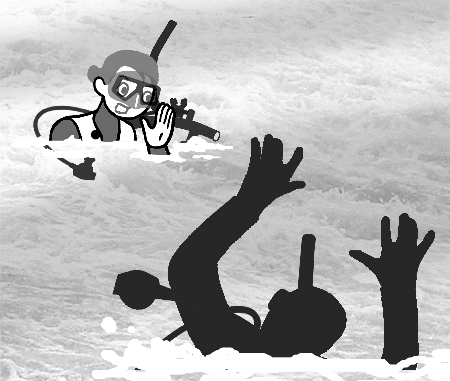
Call out first |
|
|
If the diver is unable to maintain buoyancy on his own, approach the diver from below the surface with a regulator in his mouth to prevent him from hugging you, grab the diver's legs and turn him halfway around.
|
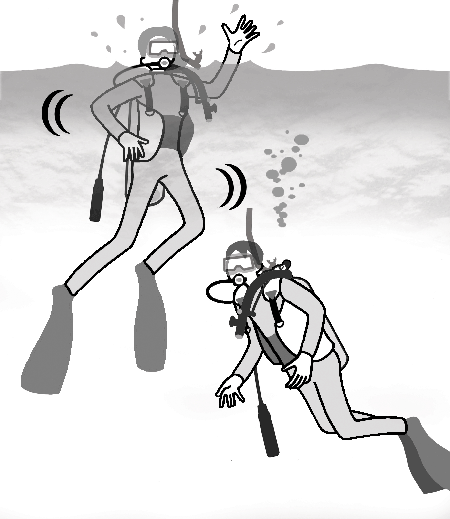
Approaching from underwater
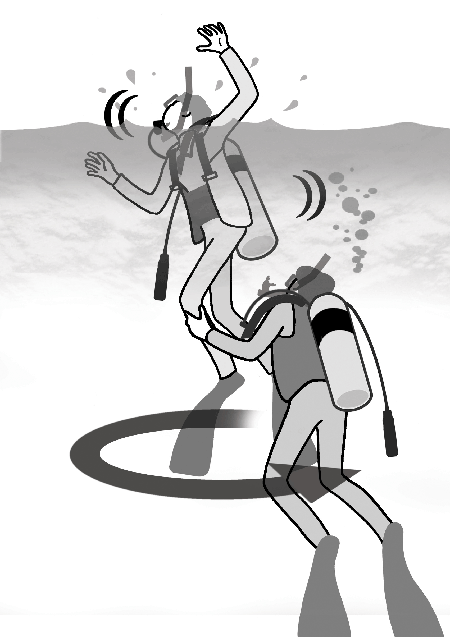
Grab feet and let's rotate |
|
Float to the surface from the diver's rear side and secure the diver's tank with the knees.
Inflate the diver's BC and, if necessary, dump the diver's weights.
|
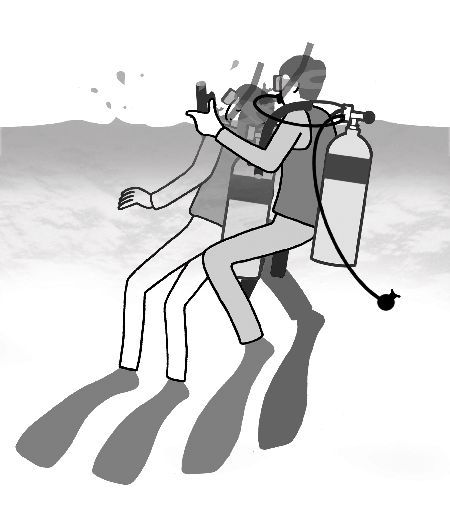
Fix the tank at the knees |
|
If you are held by a diver, if you dive underwater yourself, the diver will let you go because he/she cannot breathe.
|
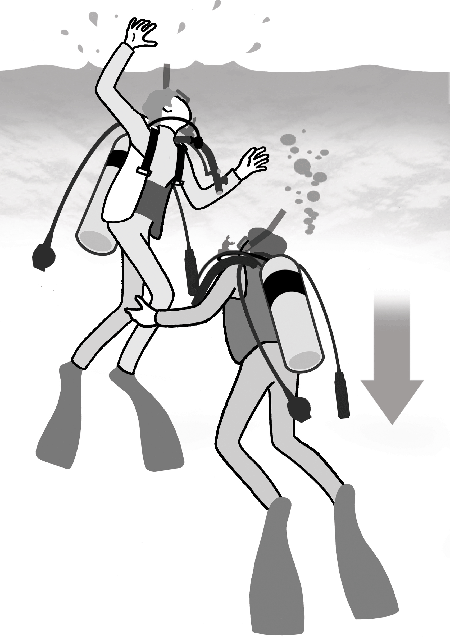
He/she'll let you go if you dive |
|
Have the diver turn his/her face up so that he/she can breathe comfortably.
Once the diver can breathe comfortably and calmly, swim with him or her to the exit point.
If the diver is unable to swim, grab the valve or BC and do a flutter kick against the direction of travel or tow the diver to safety with a foot push.
|
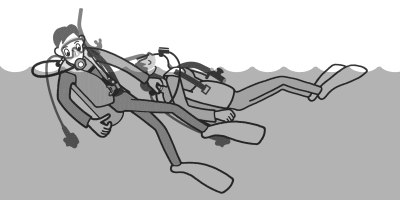
Spread-eagle flutter kick |

Foot push |
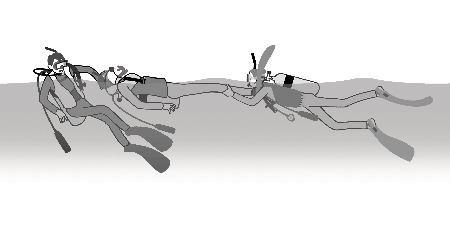
Mixed spread eagle flutter kick and foot push |
|
|
  |
|

